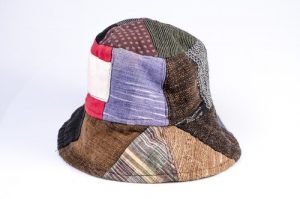Do you ever make a visit to your local mall and feel a boost of adrenaline and excitement as your feet hit the shopping pavement? How about when you are lucky enough to find that elusive deal at the sales rack stored way back in a shop’s corner? Many shoppers report a similar excitement while engaging in consumer-based activities. But what if you could get the same feeling from being a responsible consumer and participating in the art of textile recycling?
What is Textile Recycling?
Textile recycling is rapidly becoming a priority in many markets — particularly because of its cost saving measures as well as its environmentally safe intentions. The practice of textile recycling requires that recyclers turn old clothing, shoes and fabrics into new products with a new purpose, and often for new owners. It is often the case that the materials are first donated, then sorted, cleaned and turned into industrial rags that are called ‘wipers.’ Or, alternatively these textiles are shredded down for stuffing or fibre recycling.

At the beginning of the process, textile recyclers typically pre-sort materials to separate any reusable clothing first. This is done to determine whether any of the materials might be used or sent away for resale. In many communities, there are collection boxes available on street corners or in popular store parking lots which are operated by charities and businesses that actively accept clothing and fabrics. These organizations then transform materials that are considered old and used into reusable material for resale. Whatever cannot be reused as is, is then sent away to be recycled.
Although most people report donating used textiles to charity for reuse, those who are part of the textile recycling industry report that only 85% of used items are ending up in the landfill instead — with only 15% items being recycled or reused. Given that there are many who see the value of donating used materials, why not also consume used textiles as part of one of the logical solutions to the textile crisis?
Which Recycled Materials Are Typically Re-Consumed?
 Research shows that while consumers are more likely to donate high-end materials, and even purchase them, clothes deemed to be of “cheaper” quality are typically thrown right into the trash. This is because many consumers often fail to see the value in materials that do not have a strong or pricey brand. Moreover, many people assume that if a textile cannot be salvaged and profited from through re-sale, then there is likely very little value in finding the textile a new home.
Research shows that while consumers are more likely to donate high-end materials, and even purchase them, clothes deemed to be of “cheaper” quality are typically thrown right into the trash. This is because many consumers often fail to see the value in materials that do not have a strong or pricey brand. Moreover, many people assume that if a textile cannot be salvaged and profited from through re-sale, then there is likely very little value in finding the textile a new home.
Bill May, a Salvation Army facilities manager, reminds consumers that no matter the shape of an old pair of gym shorts or a work shirt, or the brand recognition, consumers and especially textile recyclers can find great use in any and all items. And even when textiles remain unsold, they are still of use to textile recyclers. For example, at the Salvation Army, old materials are often sent to a cloth recycler who can them repurpose or remake the cloth into a useful product.
How Can Consumers Become Responsible and Ethical Participants in Textile Recycling?
 The first obvious way to become a responsible participant in the textile recycling project is to donate your clothes to a charity or local textile recycling shop such as the always-popular Goodwill or Salvation Army. Alternatively, there are also other great organizations such as Dress for Success, whose main initiative is to provide low-income women job seekers with business outfits for their upcoming job interview or even their day-to-day attire.
The first obvious way to become a responsible participant in the textile recycling project is to donate your clothes to a charity or local textile recycling shop such as the always-popular Goodwill or Salvation Army. Alternatively, there are also other great organizations such as Dress for Success, whose main initiative is to provide low-income women job seekers with business outfits for their upcoming job interview or even their day-to-day attire.
Why not consider putting together a clothing sway with some of your friends and family? This is a great way to share and exchange your fantastic shopping finds, and do so with those who you trust would have treated their garments with great care.
Others often consider selling their clothes so that they can engage in the ethical process of textile recycling while also making a few bucks for the exchange. These days there are plenty of places where you can get cold hard cash for your garments — consignment ships, flea markets, and online retailers like eBay and Kijiji.
Still other people consider reaching out to organizations such as Bank & Vogue which is invested in the second-hand goods market and combining its knowledge and experience in wholesale, retail, design and manufacturing in order to provide creative ideas and solutions to help deal with what the company’s owner labels the “crisis of stuff.” In doing so, organizations like Bank & Vogue do their part in playing a meaningful role in defining, contributing to and building a closed loop economy that takes present day environmental challenges seriously.
How Can You Prepare Your Items for Textile Recycling?
 Before sending off your old items to a new home or owner, or even repurposing them for yourself and family, consider treating your garment with some last-minute love. Old textiles might need a quick mend or wash, so here’s our suggesting on thoughtfully preparing your textiles:
Before sending off your old items to a new home or owner, or even repurposing them for yourself and family, consider treating your garment with some last-minute love. Old textiles might need a quick mend or wash, so here’s our suggesting on thoughtfully preparing your textiles:
First, check to see if your garment needs any mending. If so, grad a needle and thread with a colour that closely matches that of the textile and sew away. If you are not a pro in the area of mending, we suggest getting some assistance at your local dry-cleaners which often have reasonably priced mending and altering services.
Second, if your items have sections that cannot be so easily repaired (or cannot be repaired at all) consider altering your clothes. With a pair of scissors, why not turn a long sleeve shirt into a short sleeve option that can be worn in the summer season? Or how about transforming your favourite jeans (which now might have an unfavourable tear in them) into a fashionable set of summer shorts?
Finally, how about repurposing old and torn items into scraps and rags that can be used to clean or create? We suggest turning your old textile items such as clothing, bed sheets and various home fabrics into scraps that can be used for making crafts. As most amateur and professional artists know, making crafts or painting can be a messy process. This can be easily changed with the help of a repurposed rag. And if not keep your craft area clean, old fabrics are also great for cleaning. Rather than using disposable paper towels and contributing to the crisis of waste, you might consider repurposing your textiles into cleaning rags that can be easily washed and dried once they are dirty.
Whether you are helping deal with and address the “Crisis of Stuff” by mending, selling or repurposing your textiles, rest assured that you are doing your part in contributing to the art of textile recycling and being a responsible and ethical consumer.







